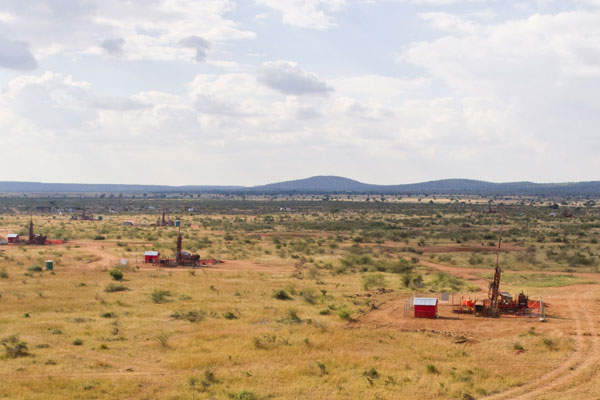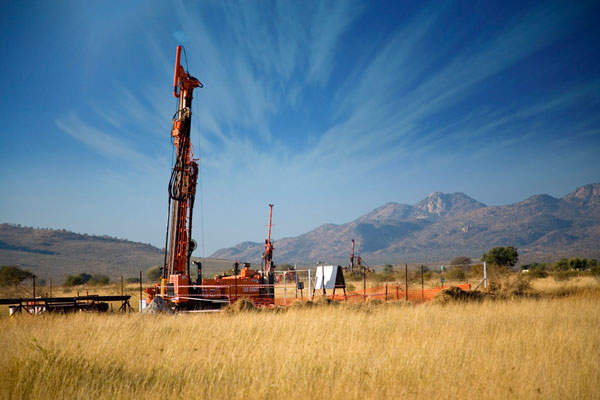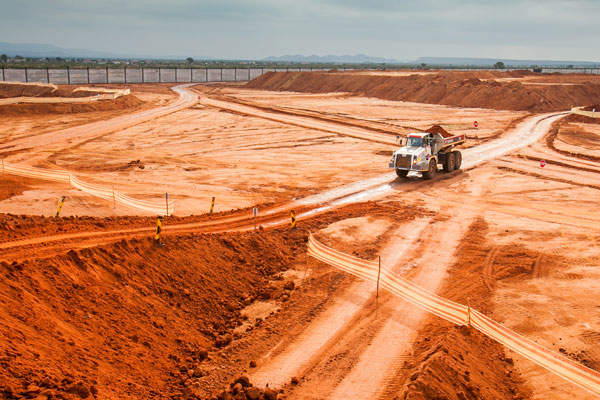Ivanhoe Mines is developing the Platreef Project on the Northern Limb of the Bushveld Igneous Complex, approximately 280 kilometres northeast of Johannesburg, in South Africa’s Limpopo province.
The project’s resources consist of of platinum-group metals (PGMs), nickel (Ni), copper (Cu) and gold (Au). The planned mine, which is expected to begin operations in 2020, is projected to become the lowest-cost producer of PGMs in Africa.
Site preparations for the construction of Shaft #1 began in Q1 2014. The mine is estimated to have a life of 36 years, including a six-year pre-production period prior to mill start-up, and will produce 785,000 ounces of platinum, palladium, rhodium and gold annually (in the eight million tonnes per annum base case). The Mining Right for the Platreef Project was granted by the Department of Mineral Resources (DMR) in May 2014.
Ivanhoe Mines holds a 64% stake in the Platreef project. A Japanese consortium comprised of ITOCHU and its affiliate, ITC Platinum Development; Japan Oil, Gas and Metals National Corporation; and Japan Gas Corporation holds a 10% stake. The remaining 26% interest in the mine was transferred to BBBEE SPV, a broad-based, black economic empowerment vehicle that includes communities, employees and local entrepreneurs, in accordance with South African law.
Platreef mine geology, mineralisation and reserves
Located near Rustenburg, 112km from Johannesburg in South Africa. It is a producer of platinum group minerals (PGMs) and covers an area of 33km².
The project consists of the Flatreef underground deposit, which has a strike length of six kilometres and hosts platinum-group elements, nickel, copper and gold resources. The deposit predominantly lies within the Platreef mineralized sequence at a depth of approximately 700 to 1,100 metres below surface.
Most of the potentially economic mineralisation is hosted within an unconformable, non-cumulate, pegmatoidal mafic to ultramafic sequence that in turn is hosted within the normal cyclic stratigraphy. The pegmatoid is bound by chromitite stringers and contains coarse-grained to pegmatoidal sulphides.
As of March 2013, the project contained estimated Indicated Mineral Resources of approximately 214 million tonnes of ore grading 4.1grams per tonne (g/t) of platinum, palladium, rhodium and gold (3PE+Au), 0.34% nickel and 0.17% copper at 2.0 g/t 3PE+Au cut-off grade, containing approximately 28.5 million ounces of platinum, palladium, rhodium and gold, 1.61 billion pounds of nickel and 0.8 billion pounds of copper. In addition, Inferred Mineral Resources were estimated to total approximately 415 million tonnes of ore grading 3.5 g/t 3PE+Au, 0.33% nickel and 0.16% copper at 2.0 g/t 3PE+Au cut-off grade, containing approximately 47.2 million ounces of platinum, palladium, gold and rhodium, 3.03 billion pounds of nickel and 1.5 billion pounds of copper.
Platreef mine development plan
A three-phase production plan is envisaged to develop the underground mine and concentrators. The first phase would include construction of the concentrator and other associated infrastructure to enable the start of production at a nominal plant capacity of four million tonnes per annum (Mtpa) by 2020. The plant capacity would be ramped up to eight Mtpa in the second phase by 2024 and then to 12 Mtpa in the final phase by 2028.
During the first phase, the 1,100-metre-deep production shaft (Shaft #2) would provide the primary mine access, while secondary access would be provided by the 950-metre-deep Shaft #1. During the initial mine development, Shaft #1 will enable ventilation intake and Shaft #2 will serve as an exhaust. During mine production, shafts #1 and #2 will act as ventilation intakes; two additional ventilation exhaust shafts (#3 and #4) are planned..
Mining and processing of ore in Limpopo Province
Long-hole stoping and drift-and-fill extraction methods will be utilised in the Flatreef underground mine. Using the stoping methods, the mine will be accessed through multiple vertical shafts. Mining will be conducted using highly productive mechanised methods and the open stopes will be filled using cemented rockfill or paste backfill methods.
Ore from the mine will be processed using a three-stage crushing circuit, milling-flotation modules and a common thickening and filtration circuit.
Construction and infrastructure facilities at Limpopo mine
The Rietfontein and Bultongfontein sites are identified as the preferred tailings storage facility sites for the three-phase mine development. The Rietfontein 2 KS site is proposed to be constructed first as a single compartment, side-hill-type tailings storage facility. A paved, all-weather national highway will provide access to the mine site. Electrical power required during the mine construction and operations will be supplied by Eskom.
Water will be sourced from the Flag Boshielo Dam and delivered through a planned pipeline that will transfer water first to Pruissen, located southeast of Mokopane and the Platreef project, and then to the mine.
Contractors involved
The shaft-sinking contract for the Platreef Project was awarded to Aveng Mining, of South Africa. DRA Mineral Projects, OreWin, AMEC, SRK Consulting, Stantec Consulting, Metallicon Process Consulting and Geo Tail were engaged to prepare the preliminary economic assessment (PEA).







